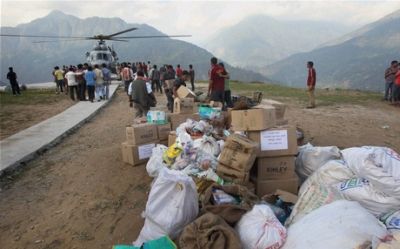Gurgaon: Gurgaon may be heading for a water crisis. Not only are ground water levels dropping alarmingly, but a lot of – wastage of water in the high rise office and residential complexes is going unchecked in the absence of proper urban laws or their implementation.
Haryana’s groundwater department points out that the water table has already sunk by nearly a metre during this season alone in Gurgaon, a business hub that has become a happening commercial and residential suburb of New Delhi.
The annual rate of decline of the water table is four feet, according to the Central Ground Water Authority (CGWA).
Shubhra Puri, who runs an NGO, Gurgaon First, told: “Gurgaon does not have its own natural water bodies or small lakes.”
For water, Gurgaon depends on Basai Canal, which in turn gets water from the Western Yamuna Canal.
“Unless the people of Gurgaon pay for water, water will always be taken for granted,” Puri said.
Prasanto K. Roy, a green activist and editorial advisor to CyberMedia, which publishes scientific journals, said thousands of taps in high-rise residential complexes may be contributing to the overall waste.
Each of these taps delivers water at 15 litres per minute, all unmetered. Under such high pressure, a 10-minute shower would consume 150 litres; a 20-minute utensil wash 300 litres; a flush between six and eight litres, Roy told.
A minimum of four such showers and two times of washing dishes daily, not to speak of leaky taps, in a single housing unit would collectively end up using 1,200 litres on the average or even more, according to conservative estimates.
Each apartment, Roy estimates, wastes between 500 and 1,000 litres daily, which adds up to approximately 500,000 litres for a single complex.
Residents pay a quarterly maintenance charge for use of plumbers, electricians and other utility which also includes use of unlimited water, adds Roy.
The groundwater department has written to the Haryana Urban Development Authority (HUDA), the Municipal Corporation of Gurgaon and other civic bodies, suggesting a consolidated plan for groundwater renewal ahead of monsoon.
The recommendations include building rainwater harvesting units throughout Gurgaon, and creating catchment areas around the Aravali foothills, says Puri.
Rainwater harvesting could take care of some of the surplus rainwater that ends up flooding low-lying areas, besides flowing unchecked into the Najafgarh drain.
A great disparity exists in the distribution of water.
The DLF golf course is watered two or three times each day. But an embargo has been placed on new swimming pools for schools, said Puri.
Although the Punjab and Haryana High Court imposed a ban on commercial use of ground water in 2012, builders are still drawing heavily from the borewells as well, depleting the water table.
Builders could save scarce underground water by using 110 million gallons of sewage, generated daily in Gurgaon, after treatment, for construction and tree plantation, according to a Gurgaon First study.
“We must come up with a viable and realistic water harvesting plan, both at a micro level and the macro level,” Nisha Singh, municipal councillor, told.
“Who would like to live in a city for long that does not have proper roads, where people have to rely on tankers for their daily water needs, and where every available open space becomes a sewage dumping yard? asks Singh, also an MBA from London Business School.
“In the row of houses that I live in, we pay to the builder (DLF) water charges at the rate of 90 paise per square yard on a monthly basis as part of the maintenance charges. There is no separate charge for water,” says Puri, a Gurgaon resident.
“The builder recently directed the residents to instal meters. Residents oppose this, saying that the HUDA should be sending the directive, not the builder,” adds Puri.
– Shudip Talukdar (IANS)
The opinions, beliefs and viewpoints expressed by authors, news service providers on this page do not necessarily reflect the opinions, beliefs and viewpoints of Hill Post. Any views or opinions are not intended to malign any religion, ethnic group, club, organization, company, or individual.
Hill Post makes no representations as to the accuracy or completeness of any information on this site page.



